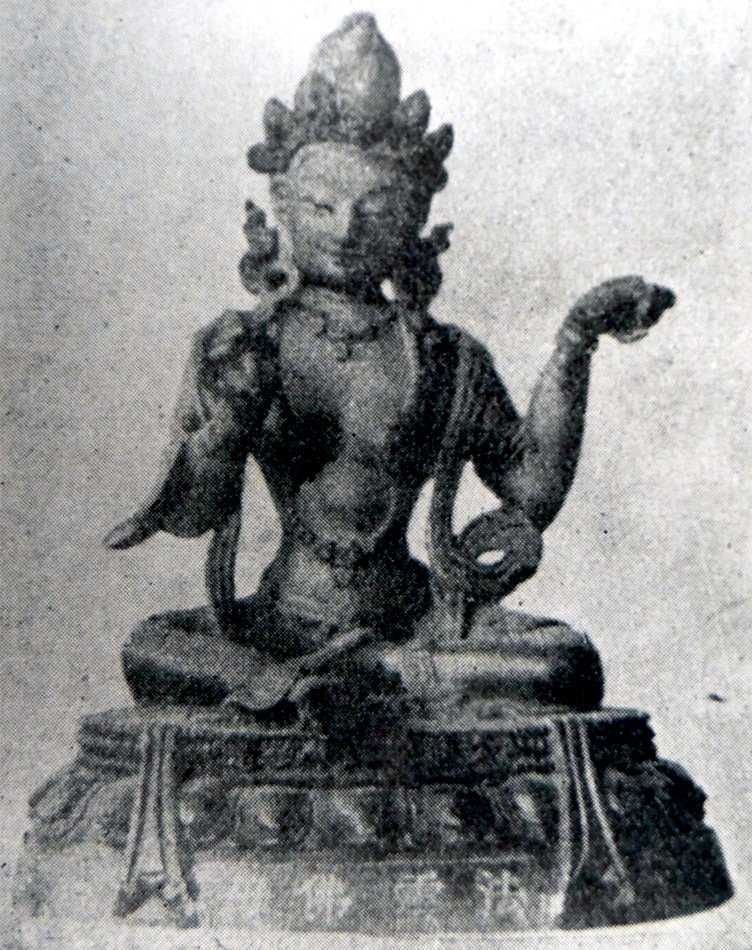The Indian Buddhist Iconography
by Benoytosh Bhattachacharyya | 1958 | 51,392 words | ISBN-10: 8173053138 | ISBN-13: 9788173053139
This page contains an iconography image of Twelve Bhumis: Dharmamegha and represents figure 223 of the book Indian Buddhist Iconography, based on extracts of the Sadhanamala English translation. These plates and illustrations represent either photographs of sculptures or line-drawing reproductions of paintings or other representations of Buddhist artwork.
Figure 223 - Twelve Bhūmis: Dharmameghā

Fig. 223: Dharmameghā
(Peiping)
In Buddhism the Bhūmis [viz., Dharmameghā] are recognized as different spiritual spheres through which a Bodhisattva moves in his quest for Buddhahood and omniscience. They are recognized as ten in number to which the Vajrayāna added two to make it twelve. As the Bodhisattva progresses in spiritual path, he develops certain special qualities which entitle him to move towards the higher Bhūmis. They are arranged one upon another in a regular order with the last at the top which when reached, makes the Bodhisattva equal to a Buddha and he attains omniscience.
These Bhūmis or spiritual spheres also received the attention of Vajrayāna, and in no time they were deified, and were given different forms. Statues were prepared and many of them were found represented in China.
These twelve Bhumis [viz., Dharmameghā] are now described in the same order as given in the Dharmadhātuvāgīśvara-maṇḍala of the Niṣpannayogāvalī, They are two-armed and hold in the right hand the Vajra and in the left their own weapons or signs.
11. Dharmameghā:
Colour: blue;
Arms: two;
Symbol: manuscript.
The eleventh goddess in the series of Bhūmi deities is Dharmameghā whose form is described in the following words: “Dharmameghā holds in her left hand the Prajñāpāramitā manuscript which is composed of the clouds of Dharma”. A statuette of this goddess is found in China. Fig. 223 illustrates this Chinese specimen.
